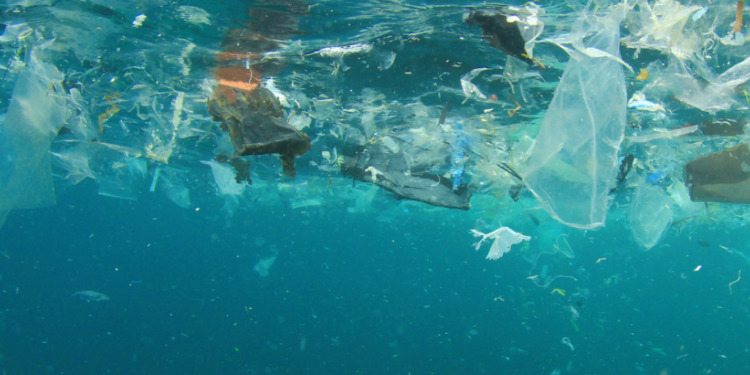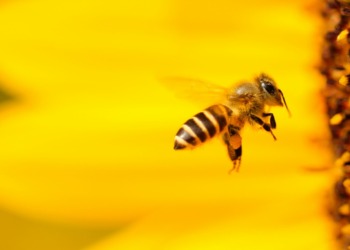What is the Zero Draft?
The Zero Draft is the technical term for the first draft of the global plastics treaty. It will serve as the basis for text negotiations over the next year, during which countries are expected to hammer out the details of the treaty’s framework before finalising the treaty text at the end of 2024.
The Draft is the culmination of proposals from 175 countries that have been involved in the negotiation process that kicked off in the second half of 2022 when the countries agreed to develop an international legally binding instrument to end plastic pollution.
This negotiation process is overseen by the Chair of the Intergovernmental Negotiation Committee (INC), which is tasked with working with the countries to broker the final treaty.
What is the significance of the Zero Draft?
The Draft reflects many of the solutions that have been shared and debated so far in the negotiations and can serve as a predictive indicator of the level of commitment countries show in ending plastic pollution (see the next section). That said, the Draft, as it currently stands, can read like a catch-all laundry list rather than a clear and decisive pathway for ending plastic pollution.
There is a reason for that. The Draft needs to reflect the numerous, varied and sometimes conflicting demands of all UN Member States involved in the negotiations. Unfortunately, these negotiations have not been entirely smooth. Countries last met in May at INC-2, where negotiations were fraught and protracted. To include all views and proposals submitted by all countries involved in the negotiations, the Draft offers up to three options for many of the obligations proposed.
Which option (or combination of options) will emerge as the frontrunner in future negotiations is yet to be seen. What we do know is that a majority of countries support a treaty with global and legally binding rules that include bans and a robust circular economy. By WWF’s count, over 140 countries have agreed that high-risk plastics (meaning those that are most likely to be pollutants or cause the most harm, such as single-use products and intentionally added microplastics) should be banned or phased out, while 145 countries have supported global requirements to ensure circularity.
The Draft lays out how such core features (bans, phase-outs, product design requirements) can be formulated as global obligations, and will be the basis for discussions in the upcoming INC-3 negotiations in Nairobi set for November 12-18.
At INC-3, WWF will be focusing on how the Draft evolves in meeting our expectations of what an effective global plastics treaty — one that can turn back the tide of plastic pollution — should look like.
How does the Draft currently measure up to expectations?
The good news is that the Draft contains the most important and ambitious measures that are necessary in curbing plastic pollution. These include provisions for:
-
Common binding global rules on plastic production and consumption
-
Global bans or phasing out of high-risk plastics
-
Product design requirements
-
Waste management standards
-
Extended producer responsibility
-
Strong financial mechanism
The Draft demonstrates that an impactful treaty is possible. It shows how global measures, such as those mentioned above, can be formulated and provides clear suggestions for how they can be structured in the treaty.
The bad news is that the Draft includes options for voluntary measures. Some obligations have also been framed in vague language that lack specificity. For instance, the Draft fails to clearly specify what must be done about some categories of high-risk plastics, such as abandoned fishing gear and microplastic leakage.
Related Articles: Draft Global Plastics Treaty Shows Promise | WWF Calls for a Global Ban on ‘Harmful and Unnecessary’ Single-Use Plastic Items Ahead of Key UN Plastic Pollution Treaty Talks | New UN Treaty Focused on Plastic Pollution | UN Treaty On Plastic Pollution: A Global Action Plan | Cities Are Key to the Success of the Global Plastics Treaty
Overall, the Draft shows countries are able to acknowledge and recognise which measures are critical and must be prioritised, and demonstrates that a treaty with significant positive global impact is absolutely feasible. But in order for countries to show they are fully committed to ending plastic pollution, they must put in place a treaty that adopts the option for implementing global and mandatory measures, rather than compromise with voluntary, nationally-determined action.
Below, we list our expectations of what countries must promote and secure in the treaty, and assess whether the Draft meets these expectations:
-
A set of common binding, mandatory and specific global rules: The plastic crisis is a global problem with global impacts. When it comes to plastic production, consumption and disposal, unless everyone is playing by the same rules, we all lose. In line with the 1987 Montreal Protocol to protect the ozone layer, we need a clear set of measures applied at a global scale to end global plastic pollution.
Does the Draft meet this expectation: Yes, but only partly. The draft includes options for both binding and non-binding measures. Including options for countries to voluntarily implement measures may be a conciliatory move to keep outliers at the negotiating table but this risks encouraging other countries to opt for the same, and take us all further away from a set of common binding, mandatory and specific global rules.
-
Global bans, phase-outs and strict regulations of high-risk plastics: As highlighted in WWF’s recent report on what measures the treaty must include, we need to urgently ban, significantly phase down and strictly regulate high-risk products which are either most likely to become pollution and/or cause the most harm, in particular single-use plastic, fishing equipment and microplastics. Many of these products are items we can easily do without, especially since more sustainable alternatives already exist.
Does the Draft meet this expectation: Yes. The draft proposes legal text to ban and phase out high-risk plastics, including products, polymers and chemicals of particular concern. The draft demonstrates that designing targeted global bans is absolutely feasible, and suggests an approach for the phase-out of products in annexes to the treaty. However, the draft also includes options for voluntary and nationally determined bans, which will, if the countries opt for this approach, miss the benefits of harmonised regulations and take us no further than the status quo in addressing the most problematic plastics at a global scale.
-
Global product design requirements: A global set of design standards with particular input from low- and middle-income countries, which deal with the majority of the world’s waste, will be needed to move towards large-scale reuse systems, non-toxic recycling and environmentally sound management.
Does the Draft meet this expectation: Yes, partly. The draft proposes global minimum design and performance criteria to be developed for all products. The work to develop these sector- and product-specific requirements still remains and should be the subject of more detailed technical discussions moving forward. The draft also proposes requirements particularly on labelling and transparency of plastic products and their contents.
-
A full lifecycle approach: We must not allow for the scope of this treaty to be limited to waste management. It must work to reduce production and consumption as a whole and create a just and equitable transition, covering all main sources, including single-use plastics, fishing gear and microplastics.
Does the Draft meet this expectation: Yes. The draft proposes measures throughout the lifecycle, from production of plastic polymers and products, through to product design, waste management, and for cleaning up legacy pollution. It will be important for countries to insist on keeping this wide range of measures, as addressing the problem at all stages of the lifecycle will be absolutely necessary to reach the goal of ending plastic pollution and is the most cost-effective way of doing so.
-
Robust technical and financial mechanisms: Many countries will need substantial financial support to implement the provisions included in the treaty as well as to support the communities most impacted by plastic pollution.
Does the Draft meet this expectation: Yes. The draft provides a very good starting point for the discussions on financing and includes concrete options for financial mechanisms under the treaty. Work remains for countries to agree on the combination of mechanisms that would mobilise the sufficient technical support and financing for implementation in all countries.
Where do we go from here?
We’re in a good place, with a promising Draft that hints at great ambition in ending plastic pollution. To make sure we achieve this much-needed end goal, countries must reject voluntary and non-binding approaches as acceptable alternatives to common binding global measures. We also want to emphasise that voluntary action should complement, not replace, joint rules.
Negotiators must focus on where the potential is greatest for global cooperation and ensure that the most effective measures in the Draft, such as global bans, product requirements, waste management standards and financing, remain in the finally adopted treaty.
Negotiators should avoid:
-
Watered down and general formulations that don’t provide a clear and targeted approach to tackle urgent plastic pollution.
-
Treaty details that are structured around non-binding and nationally-determined contributions to a common global goal, without common and specific obligations and joint rules.
-
Lack of options for providing means of implementation – such as financial support – to developing countries with transitioning economies.
-
A negotiation process that doesn’t take into account the lived experience and demands of the countries and communities most impacted by plastic pollution.
WWF warns against settling for a “lowest common denominator” approach to the treaty negotiations and urges negotiators to strive for developing the global rules needed to fulfil the mandate of ending plastic pollution.
With just over a year of negotiations remaining, governments, businesses, civil society and communities from around the world must ensure the most urgent actions to end plastic pollution are discussed and included in the new global treaty, and help forge a path to a pollution-free future.
— —
This article was published as part of an editorial collaboration with the WWF.
Editor’s Note: The opinions expressed here by the authors are their own, not those of Impakter.com — Featured Photo Credit: WWF.









